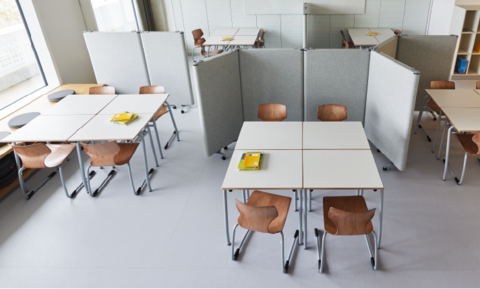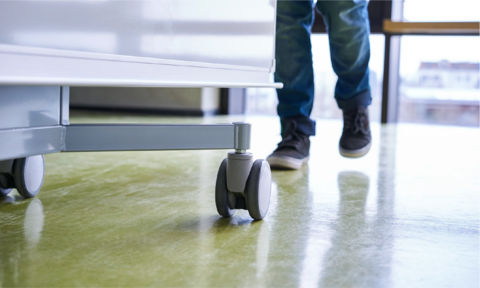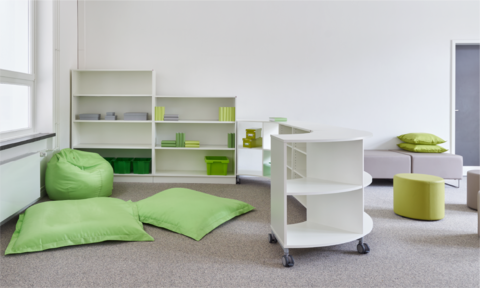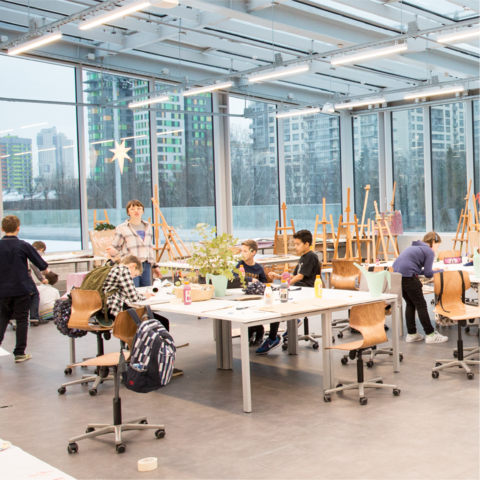09.01.2023
Learn in peace
Designing healthy acoustics in the learning space
A quiet learning space is a blessing for the ears and brains of learners and teachers, but it is not a reality in many schools. In order to change this and at the same time maintain the vitality of learning, classrooms, learning landscapes and other learning spaces can be acoustically optimised.
"Quiet please" - this is probably one of the most frequently said and heard phrases in many schools. It's usually directed at children who are pushing chairs around or talking animatedly during learning sessions. The desire for quiet is justified: Because only in a pleasant background noise can everyone concentrate and feel comfortable (see also future trend Edutecture). However, it is not just the learners who are in demand here, but rather the learning spaces.
Why are learning spaces often so loud?
The traditional classroom is acoustically prepared for frontal teaching, i.e. a speaking teacher and quietly listening pupils - but not for alternative forms of new learning, such as interactive or collaborative learning. The reverberation times here are often considerably long at 1s. And especially when many learners are discussing, laughing and working at the same time, it becomes difficult to understand the words of others in such learning environments.
A natural amplifier is the Lombard effect: In a noisy environment, students raise their voices in order to be heard better by others. However, they also unintentionally increase the volume in the room and the need for others to speak louder.
What is the effect of harmonious acoustics in the classroom?
Low room acoustic quality (also known as audibility) is a barrier to effective learning. Among other things, it demands more concentration from learners and causes them to tire more quickly. This is particularly true for children who learn outside their native language. On the other hand, pleasant acoustics in the learning room increase the learning performance of the pupils, for example when reading.
Studies also show that teachers and learners experience less stress in a classroom with pleasant acoustics. Teachers are more likely to feel at ease in a quieter room. Relaxed pulse can be proven. And according to a study, children from quieter classrooms are also happier with themselves and experience more Joy in everyday school life.
How can you improve audibility in the learning space?
Many new school buildings use structural elements from the ground up to give learning spaces more pleasant acoustics, e.g. sound-absorbing acoustic ceilings, wall panels and floor coverings. For learning spaces in existing buildings, on the other hand, there are options for retrofitting acoustic optimisation - even without major construction work. These include
Acoustic elements
Acoustic elements are available in various forms, for example as partitions or as elements for walls and ceilings. With a well thought-out selection and arrangement, they can particularly support certain uses of the learning space, e.g. group work.
Upholstered furniture
Beanbags, Sofas and Upholstered stools are not only comfortable seats, but also acoustic dampers, i.e. they reduce reverberation times in the learning space.
So there are ways in which even the classic classroom can harmonise a healthy learning atmosphere with a lively school day: from inconspicuous chair glides to sophisticated arrangements of acoustic elements.

 Deutsch
Deutsch
 English
English
 Français
Français







